Key takeaways:
- Selective mutism is an anxiety disorder affecting children’s ability to speak in certain situations, requiring empathy and supportive environments for effective management.
- Raising awareness fosters understanding, dismantles stigma, and encourages advocacy for better resources in schools and communities.
- Connecting through local support groups and social media can provide invaluable emotional support and foster friendships among those affected by selective mutism.
- Organizing community events, like workshops and discussions, creates safe spaces for individuals to share experiences and build connections through shared challenges.
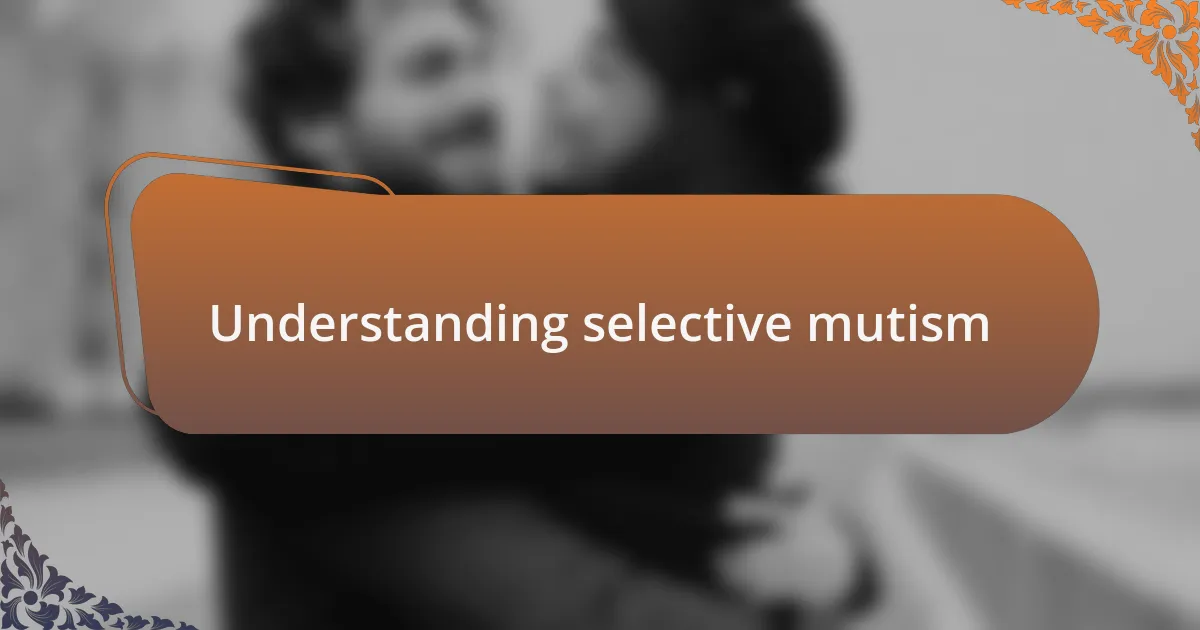
Understanding selective mutism
Selective mutism is a complex anxiety disorder primarily affecting children, characterized by an inability to speak in certain social situations despite having the ability to communicate effectively in comfortable settings. I remember a child I once observed who would chat animatedly at home, but the moment she stepped into her classroom, it was as if her voice vanished into thin air. How often do we overlook the silent struggles of those around us?
For many, the experience of selective mutism feels isolating. Imagine wanting to ask a question but being gripped by an overwhelming fear that keeps your words trapped inside. It’s not just about reluctance to speak; for those who live with this condition, it can feel like a wall separating them from their peers, friends, and opportunities.
Understanding selective mutism requires empathy and patience. Each child’s journey is unique, with varying triggers and manifestations. I often wonder: what if we took the time to truly listen, to understand the silent cries for help? By fostering a supportive environment, we can create a space where these children feel safe to eventually share their voices with the world.

Importance of raising awareness
Raising awareness about selective mutism is crucial because it helps dismantle the stigma surrounding mental health, particularly in children. I recall a workshop where a parent spoke about their child’s struggle; the moment others heard that story, the room transformed into a supportive community. It struck me how sharing experiences like this can foster compassion and understanding, encouraging more people to reach out rather than withdraw in confusion.
Awareness also fuels advocacy for better resources and support systems for affected individuals. Think about how many schools are equipped to recognize selective mutism; very few, in my experience. By raising awareness, we can push for training and resources that empower educators to create inclusive environments where children can thrive without fear. Isn’t it surprising how a simple conversation can spark the change we desperately need?
Finally, awareness inspires action. When I see articles, events, or campaigns focused on selective mutism, it ignites a sense of purpose within me. I know that by educating just one person, I’m contributing to a ripple effect that can change lives. It makes me ponder: what if each of us took the initiative to speak up, in our own way, to champion those whose voices are often silenced?
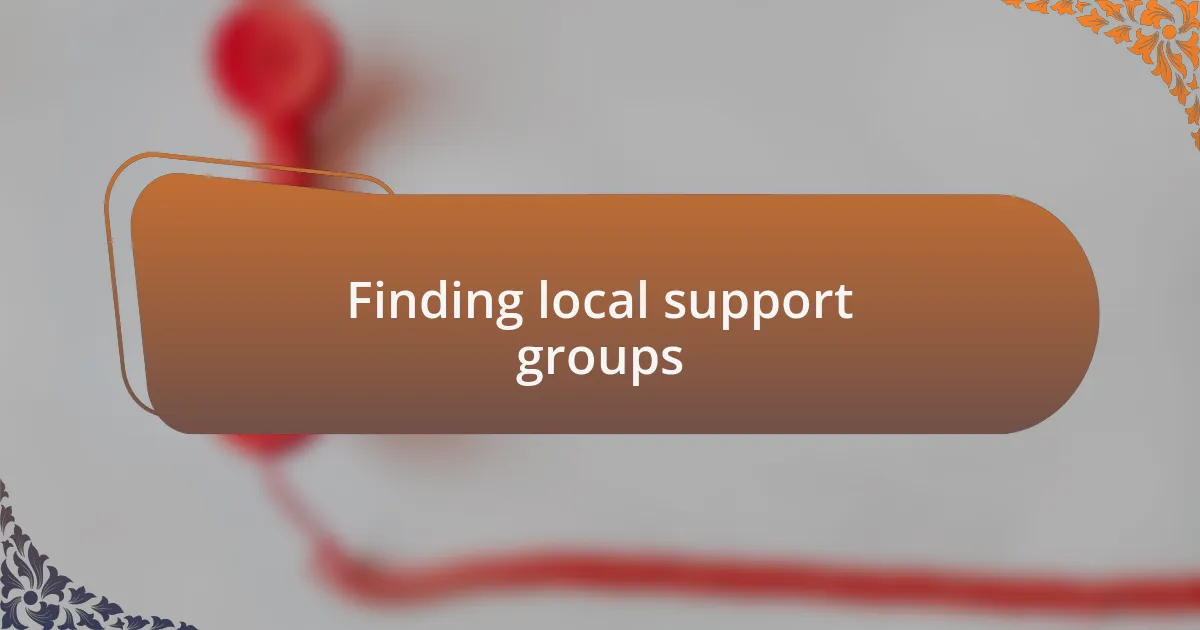
Finding local support groups
Finding local support groups can be a game-changer for those navigating selective mutism. I remember my first meeting; the room was filled with parents who understood my struggles without needing to explain. It was comforting to realize that I wasn’t alone and that we shared similar challenges and victories.
When searching for support groups, I found that community centers and schools often have listings. Often, a quick online search can lead you to local organizations focused on mental health. Don’t underestimate the power of word-of-mouth, either. I once connected with a support group through a friend whose child faced similar communication challenges. That personal recommendation made a world of difference.
Connecting with these groups has brought not just understanding but also friendship. It’s incredible how discussing our journeys can strengthen these bonds. Have you ever experienced that sense of relief when someone simply gets what you’re saying? That’s what these gatherings provide—an invaluable network of support where shared experiences lead to deeper connections.
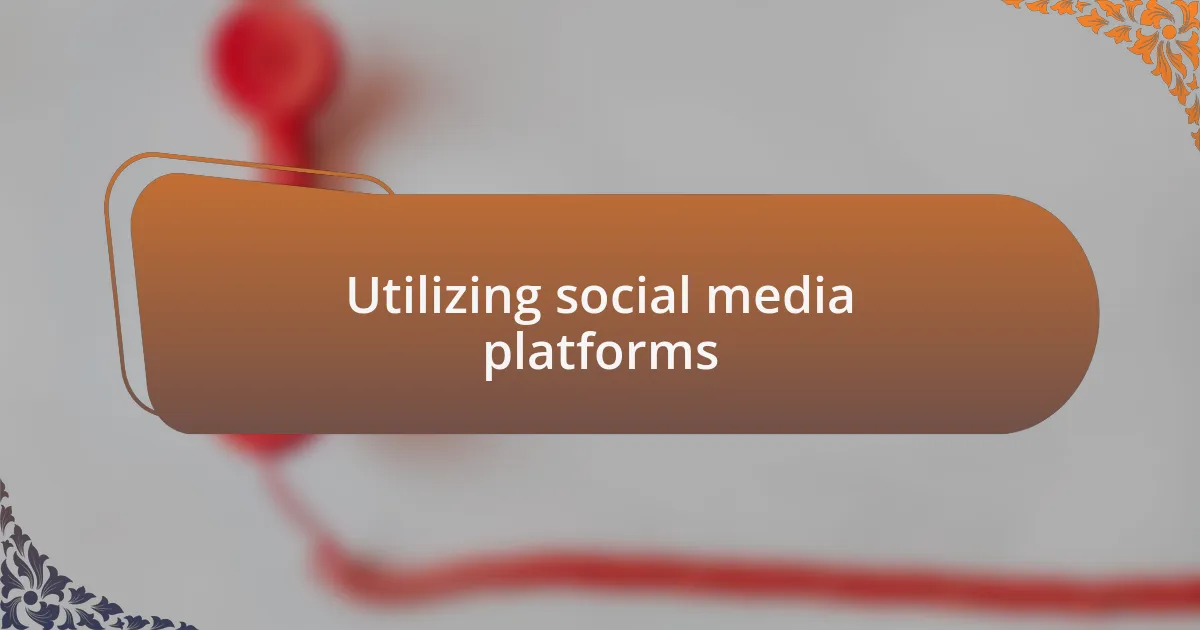
Utilizing social media platforms
Using social media platforms to connect with other research participants has been an enlightening experience for me. I remember when I joined a Facebook group dedicated to selective mutism; it felt like entering a safe space where everyone shared their stories, triumphs, and frustrations. The immediacy of feedback from individuals who truly understood my journey was both comforting and empowering.
I often found myself scrolling through posts late at night, drawn in by the raw honesty of parents and individuals navigating similar challenges. One night, I posted a simple question about coping strategies, and within minutes, my notification panel lit up with thoughtful advice and personal stories. It was humbling to witness how strangers could come together to exchange support and wisdom, reinforcing that I was never truly alone in this struggle.
I also discovered the power of Instagram, where I’ve followed accounts dedicated to raising awareness about selective mutism. Engaging with visual content and short, impactful stories allowed me to gain insights while also contributing my own experiences. Isn’t it uplifting to think that, with just a few taps on our screens, we can reach out to a community that spans across continents? Platforms like these remind us that connection is just a post away, making the world feel a little smaller and a lot more supportive.
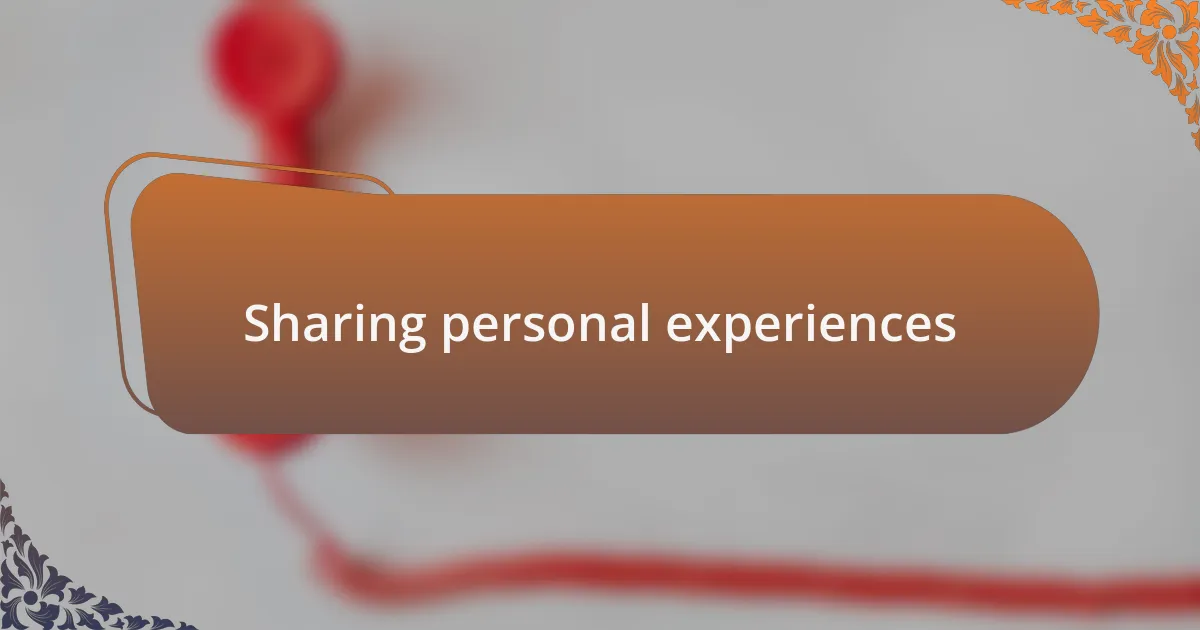
Sharing personal experiences
Sharing personal experiences has been a transformative aspect of my journey. I recall attending a local support group where participants openly talked about their daily challenges with selective mutism. As each story unfolded, I felt a wave of validation wash over me; for the first time, my own struggles felt clearly understood and relatable.
In another instance, I decided to keep a blog to document my experiences. I was nervous at first, but the comments from readers resonated deeply. One particular message from a young adult who had once battled selective mutism stuck with me. They wrote, “Reading your story made me feel less isolated.” Moments like these reminded me of the profound impact our stories can have—how sharing our truths can not only help ourselves but also reach out to others who may be silently suffering.
When I think back on these experiences, I realize they have shaped my understanding of connection. Have you ever wondered how sharing your own journey might impact someone else? It’s fascinating to think that our narratives, no matter how small, can spark conversations and forge bonds within a community that thrives on shared experiences and mutual support.

Organizing community events
Organizing community events has been an integral part of fostering connections among those affected by selective mutism. I remember collaborating with a local library to host a “Speak Freely” event, where individuals were encouraged to engage in low-pressure discussions. The anticipation in the air was palpable; seeing people come together, some with shy smiles and others with eager hearts, created an atmosphere of safety and openness.
During one of these gatherings, a parent shared their struggles in supporting their child with selective mutism. It struck me how vital these events are, as they allow participants to not only share their concerns but also celebrate small victories. Have you ever found solace in a community that understands your journey? Moments like these remind us that, often, it’s in the company of those who truly get it that we find the strength to explore our own voice.
Another memorable event was a creativity workshop, where we encouraged participants to express themselves through art. It was incredible to witness individuals connecting through their creations, each piece telling a story of its own. I left that day reflecting on how art transcends words, allowing us to communicate emotions that may be too difficult to express otherwise. Watching people bond over their experiences was a testament to the power of organizing spaces where openhearted conversations can bloom.
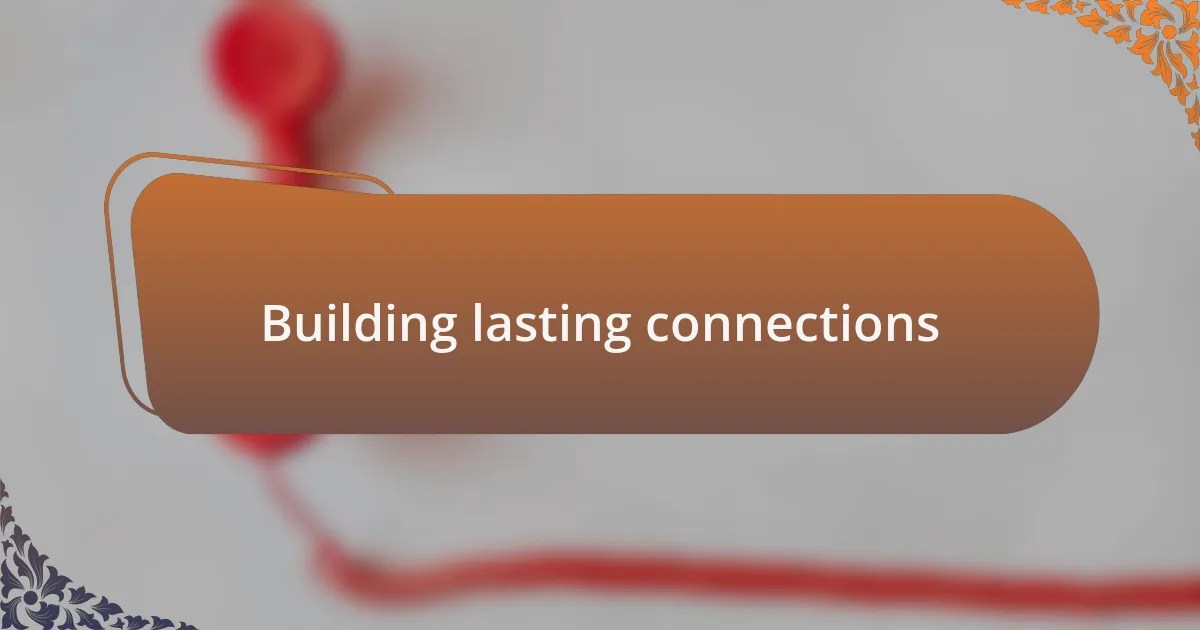
Building lasting connections
During my journey of connecting with other research participants, I often found that simple gestures fostered the deepest relationships. For instance, I was struck by how a shared cup of coffee became a bridge. Over steaming mugs, participants would open up about their experiences, revealing fears and triumphs that might have remained hidden in a more formal setting. Isn’t it fascinating how something as ordinary as coffee can serve as a catalyst for meaningful connection?
I recall one heartfelt encounter with a parent who was overwhelmed with their child’s journey through selective mutism. We sat together, and as they spoke, their vulnerability created an incredible bond between us. It was a moment filled with understanding—neither of us had to say much; we just knew. Isn’t that the beauty of connecting with others? Sometimes, it’s not about the words exchanged but the silent acknowledgment that we are not alone in our struggles.
Additionally, my experience has taught me the power of follow-up. After initial interactions, I made it a point to check in with participants, often through a simple text or email. This small effort transformed casual acquaintances into trusted allies. Have you noticed how a little perseverance in nurturing relationships can lead to a supportive network? The effort to stay connected turns individual stories into a tapestry of shared experiences, making each thread stronger together.